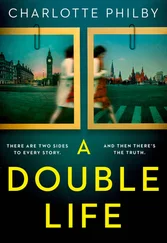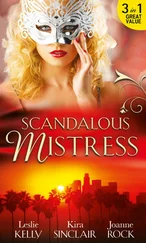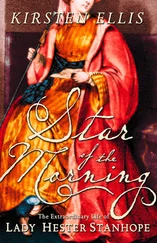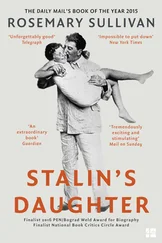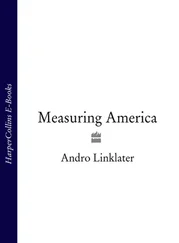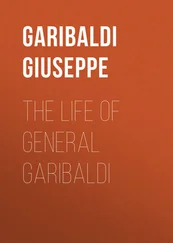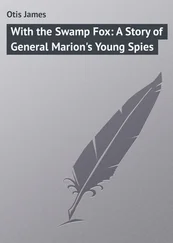19
JEFFERSON’S GENERAL
THE INSTINCT OF “THE COMMANDING GENERAL” as Congress now referred to Wilkinson, was as always to strengthen his political base. He had the endorsements of Washington and Hamilton to add to that of the president, but his connections to Jefferson’s party suffered from his association with Hamilton’s military policies. Already antimilitarist Republicans such as Elbridge Gerry and the freshman congressman Edmund Randolph were calling for the elimination of his rank as well.
Barely two months after arriving back in the south, he sailed again from New Orleans to return north, this time with Nancy—“Blooming still as Hebe,” he reported, “and fully qualified quickly to repay for the pain and pangs of absence”—and their two sons. By July, he was in Georgetown, neighboring the new federal capital, where the next president would officially reside. There he went to work.
The intimacy with Hamilton was kept warm with a gift sent to New York of pecan nuts and orange shrubs for his family, and a male- bonding letter commenting on the luscious “women of figure” Wilkinson had met at a ball in Havana. “I defy the most prized mortal to behold them steadily for a second,” he confided nudgingly, “without strong emotions of admiration and desire.” Science was what excited Thomas Jefferson, and so rare Indian pottery and weaving brought from Louisiana and Texas, courtesy of Nolan, were dispatched, with a superb map of the territory, to Monticello.
For Aaron Burr, the Federalist candidate for the presidency, and a friend of Nancy’s cousin Charles Biddle, there were meetings and coded letters whose import would not become clear until five years later, and the kind of godfatherly exchanges that led to Burr’s securing a place at Princeton College for Wilkinson’s youngest son, Joseph. Even faithless John Adams, who had failed to push for Wilkinson’s promotion to major general, received a sociable invitation to a party in the muddy wasteland of the District of Columbia. Mrs. Thornton, wife of William, the Capitol’s architect, wrote in her diary of seeing the president’s secretary stumbling “across the fields to Mrs General Wilkinson’s party . . . [whence came] the enlivening strains of a military band with which his company was entertained.” All that could be done politically was done.
The need to bolster his position was underlined by the unwelcome arrival of a letter from Andrew Ellicott in August. Despite its friendly tone and congratulations on being made “head of the army again,” the reminder that the scientist had returned from the wilderness was a cause for concern. It was fortunate therefore that shortly before the general left Washington, one further event helped his cause, although no one could tell who was responsible.
In May, John Adams had dismissed James McHenry, a Hamilton ally, in a fine outburst of fury: “Through all parts of the Country, Sir, Your conduct in the Department is complained of. Every member of Congress I have spoken with tells me that you want capacity to discharge its duties . . . You cannot, Sir, remain longer in Office.” Until the fall, when Samuel Dexter took over, the War Department had no leader, and overwhelmed officials besought the commanding general to help them deal with its business. For several months, Wilkinson had unrestricted access to the records containing the many accusations against him that had accumulated since he rejoined the army. In November, while Dexter was away, a fire broke out in a building that had been “locked for two weeks,” as the Federal Gazette pointed out, destroying all the records. Suspicions tended to rest on Treasury Secretary Oliver Wolcott Jr., who was first at the scene, although he had nothing to gain from the blaze. A few days later, Brigadier General James Wilkinson and his wife left town for military headquarters in Pittsburgh.
Whatever or whoever caused the fire, he must have felt he was free. In July 1799, his blackmailing friend and dear enemy Manuel Gayoso de Lemos, who knew all Wilkinson’s secrets from the Spanish side, had contracted yellow fever and died. Now most of the official papers on the American side had gone up in smoke. However the election turned out, one of his friends, Jefferson or Burr, would become president, and his future could unfold without his being haunted by the old suspicions.
DURING THAT WINTER WHILE FORT FAYETTE, the army’s headquarters, was being refurbished, the Wilkinsons resumed their dominance of Pittsburgh’s small but growing society. This was congenial to both. Nancy was among friends, and the brigadier general was in unchallenged command. He was by nature hospitable and generous, and as a garrison town, Pittsburgh could be relied on to provide the appreciative audience he needed. A portrait painted by Charles Willson Peale a little earlier shows him plump and authoritative, his bright, dark eyes gleaming from a jowly pink face, and the bristly gray hair no longer curling but brushed straight back from his high forehead. Not even Peale’s flattering technique can disguise the double chin or the hard expression, but there is also the alertness and appetite for sensation that made him attractive.
His talk was wide-ranging and engaging. In 1800 no one had seen more of the United States, both geographically and socially, than Wilkinson. His extensive travels had made him familiar with life in New Orleans and Michigan and much in between. He had known well the first two presidents—and would surely be a friend of the third— as well as Miami chiefs, clothing contractors, and sutlers. He attended lectures at the American Philosophical Society as equably as he faced Little Turtle’s bullets at Fallen Timbers. He was a passionate gardener and adored music—any fifer or trumpeter who showed talent could expect a transfer from his frontier fort to a soft life at headquarters. He preferred his cigars to come from Havana, and his Madeira to be served chilled. He still showed off—a habit that sounded increasingly pompous— but he encouraged his friends to do the same.
Young men with a taste for adventure were exhilarated by his theatrical style, and it showed not only in their devotion to him but in the operatic phrasing they learned from him. Thus a quarrel with the genial Gayoso prompted Philip Nolan to term him “a vile man and my implacable enemy,” while Zebulon Pike compared the clouds around the summit of Pikes Peak to “the ocean in a storm, wave piled on wave and foaming.”
On formal parades, Wilkinson chose to wear the peacock uniform that he dressed in for Peale’s portrait. The shoulders were decorated with epaulets the size of platters overflowing with gold braid, each studded with a single enormous silver star denoting the rank of a brigadier; the facings on the topcoat were yellow, as was the waistcoat, the buttons gold, and white ruffles exploded from beneath an elaborately knotted black silk stock. The display was excessive, but served a purpose. Both personally and professionally, he was the army’s figurehead. In a society deeply suspicious of a large, standing force of regular soldiers, it was no bad thing for military morale to see the senior general so obviously proud of his position.
Presumably he would have worn his full dress uniform at the formal party the Wilkinsons planned to celebrate the inauguration of the new president.
On February 17, 1801, however, the long drama of the hung election between Burr and Jefferson was at last resolved. With each receiving seventy-three electoral-college votes, the decision had gone to the House of Representatives, where thirty-five ballots had failed to break the agonizing tie. On the thirty-sixth, the stalemate broke, and the moment it was known that Jefferson would become the next president, Wilkinson’s faithful subordinate Major Thomas Cushing sent an urgent warning to Richmond: “It is understood on all sides that an entire new administration is to be formed and that many other alterations are to take place.” For the army, change could only be bad. Abruptly Wilkinson departed for Washington, leaving Nancy to stand in for him, welcoming the officers “in front of her apartments where a large collection of ladies were previously assembled,” before leading the entire company to listen to the handpicked band and watch a fireworks display.
Читать дальше



